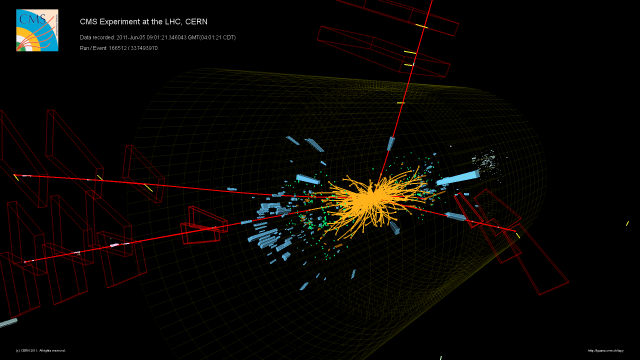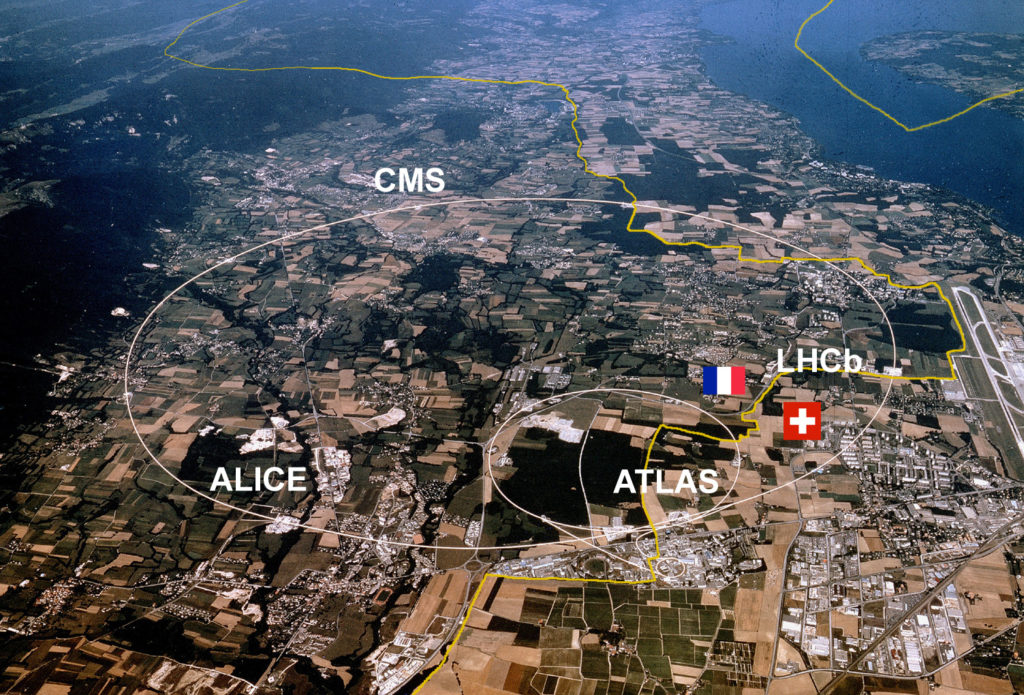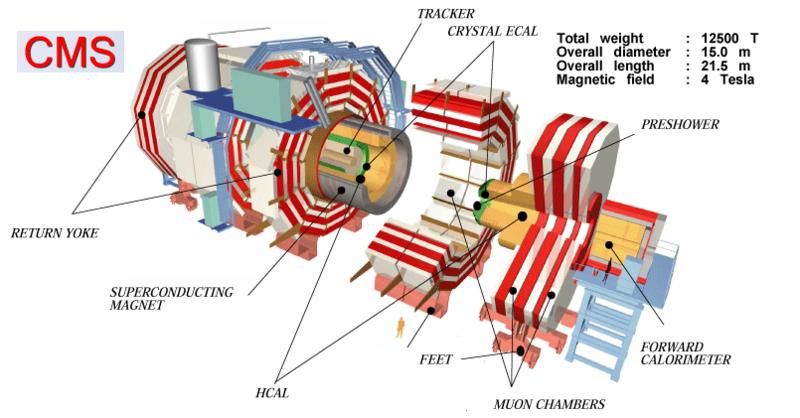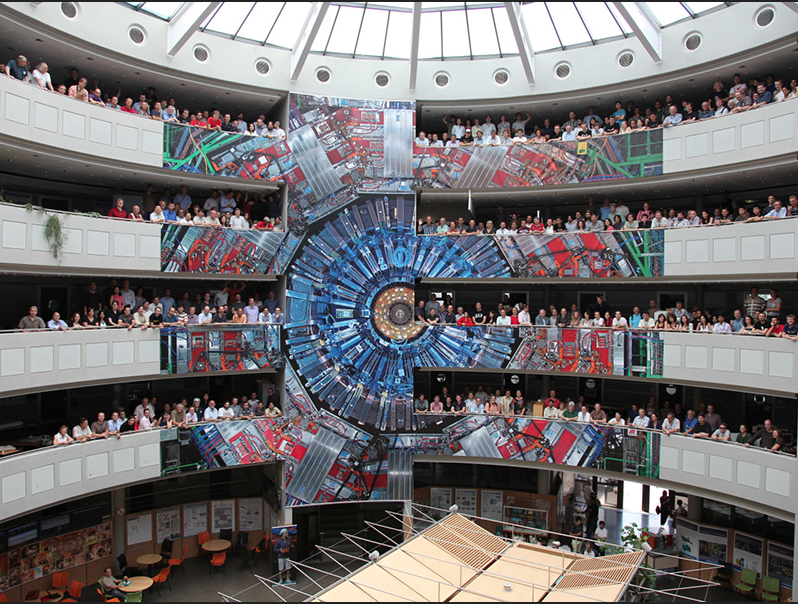PageContent
The CMS Experiment
The goal of the experiment, which uses the Compact Muon Solenoid detector (CMS), is to explore a vast phenomenological sector in the world of elementary particles and to advance knowledge of the fundamental laws that describe our physical universe. The researchers of the CMS collaboration who, together with the colleagues of the ATLAS experiment discovered the Higgs boson in 2012, in addition to studying in detail the phenomenology of this new particle, aim to verify in an increasingly stringent way the predictions of the Standard Model (SM) , the theory that currently best describes the subnuclear world.

Other priority fields of investigation of the experiment are the search for the existence of phenomena not predicted by the SM (possibly predicted by new theories, eg Supersymmetry, String theory, Grand Unification theories), the identification of the constituents of what we call “dark matter”, the search for any extra dimensions of space and, last but not least, the search for unequivocal signals of the formation of Quark-Gluon plasma, a new state of matter.

CMS is one of the largest and most complex particle detectors in the world. It is located at point 5 of the CERN LHC (Large Hadron Collider) at a depth of about 100 m, in a cave dug in the countryside near the French town of Cessy, a few kilometers from Geneva. CMS has a cylindrical shape, with a length of 21 meters and 15 m in diameter, has a weight of about 14,000 tons. A vacuum tube with a diameter of a few cm passes through its axis. Inside, protons accelerated by LHC circulate in opposite directions. These particles are concentrated in “bunches” which are collided in the center of the detector with energies in the center of mass up to 14 TeV. In addition to protons, LHC is also able to accelerate bunches of Pb ions at very high energies. The heart of the detector consists of a large superconducting cylindrical magnet capable of generating a 3.8 tesla solenoid magnetic field, approximately 100,000 times more intense than the earth’s. Inside, arranged in successive concentric layers, there is a silicon “tracker”, an electromagnetic calorimeter with scintillating crystals and a sampling hadron calorimeter, made up of alternate layers of brass / steel and plastic scintillators. Outside the magnet, inserted between the steel planes that form the return “yoke” of the magnetic field flow lines, are the large gas detectors that make up the muon identification system.

The CMS detector and the software necessary to the experiment were designed and built by the homonymous collaboration, currently made up of about 4,000 people, including researchers, engineers, technicians and students, representing 230 scientific institutes from 50 countries.

A group from Bologna, currently composed of about 35 people including physicists, technologists, technicians and doctoral students, has been part of the CMS collaboration since 1995. After participating in the construction and installation of the large drift chambers (DT) of the central part of the muon detector, the design of its trigger system and the management during the data collection started in 2011, the group is now participating in the project to revise and upgrade the muon detection system, both in the central (DT) and in the forward part (GEM). The upgrade of the whole CMS began gradually a few years ago and will end in 2026, with the beginning of the phase called High Luminosity LHC (HL-LHC), at the end of which the experiment is expected to have accumulated a statistics about 20 times larger than that currently available. From 2013 to 2019 the Bologna group participated in the construction and installation of a monitor to detect the halo produced by the LHC beams. The detector, designed to tolerate the radiation it will absorb throughout the HL-LHC phase, started operating at the beginning of Run2.

Our group is also very involved in the development and management of the software and computing systems of the experiment. We are currently studying new approaches, based on Machine Learning and Deep Learning techniques, to improve data analysis and to develop new trigger and reconstruction algorithms.
Local INFN responsible Andrea Perrotta andrea.perrotta@bo.infn.it Tel.: +39 051 2095140












